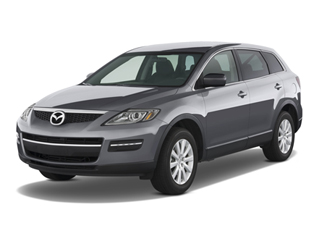The next-generation Subaru WRX is less than a year away from being shown in production form, after this design concept was revealed at the 2013 New York auto show.
Although Subaru was tight-lipped about specification details and timing, executives did confirm that they expect this to be the fastest-ever Subaru WRX model; that it will use a downsized 2.0-litre direct-injection turbo; and it will be offered as a sedan only with different styling to the regular Impreza.
Asked directly whether the next Subaru WRX will be faster than the outgoing 2.5-litre turbo model, which claims 0-100km/h in 5.3 seconds, company spokesperson Masashi Uemura replied �??we hope so�?�.
Subaru of America president Tom Doll was more specific about the powertrain options, saying that �??I think you can probably guess that with the 2.0-litres that are currently in the Impreza that a 2.0-litre turbocharged engine is coming�?�
�??It will have a manual transmission,�?� Doll also confirmed. �??We might [also] have a CVT in it, with paddleshifting.�?�
He did, however, deny that a hybrid version is being planned.
Despite being based on the new Impreza platform, the next Subaru WRX will share only some of its body panels with the regular models. While the show car does not look anything like the current Impreza, equally Subaru insists the concept�??s styling forms only a guide to the production WRX.
�??We are trying to split the WRX and STI brands off and away from the Impreza to try and get their own unique styling and own unique attributes,�?� Doll added.
�??They may share some [panels] but we�??re trying to create �?" as you can see with the car here �?" its own style and its own definition, as opposed to just taking it [WRX] from the Impreza model and saying it�??s based on the Impreza.�?�
Asked whether the WRX will still be based on the Impreza platform, Doll replied �??yes it will be�?�, but asked whether it will get a unique body, he answered �??that is correct�?�.
The WRX is also being firmed-up, with Doll saying the company wants to make the new model �??drive and handle like a BRZ�?�. Asked whether that means the new WRX will be firmer than the current car, which has been criticised for being too soft, Doll answered a decisive �??yes�?�.
�??We learned with the BRZ it�??s not just about 0-60 [mph] speeds, it�??s about handling and fun,�?� he continued. �??That�??s what the BRZ taught us.
�??You will see a lot of those positive attributes �?� trying to be built into the next generation of Rex models.�?�
Pressed for timing, he confirmed that a production version is �??not years�?� away.
�??It�??s close,�?� he added. Asked if that means it is months away, Doll replied �??it depends on how you measure months�?��?�
The production version is �??possible�?� for a Tokyo motor show unveiling in November.
The fourth generation of WRX in two decades will also revert to offering a sedan-only body style. The previous-generation model, which launched in 2007, was the first �?" and now it appears only �?" WRX to offer a five-door hatchback body style. A wagon is unlikely to make a return.
�??For the next generation we are moving away from the five-door style �?� we�??ve gone for a sedan only,�?� confirmed Doll.
�??Performance sedans are defined in the sedan segment�?�.
The WRX concept wears �??WR Blue Pearl III�?? paint, while fluorescent yellow is used on the WRX front grille badge, brake callipers and exhaust finisher.
The concept rolls on 245/40ZR20 Dunlop tyres with BBS forged alloy wheels.
Describing the WRX concept car�??s styling, Subaru says that �??the front design emphasises the aggressive stance of WRX, together with solidity and stability.
�??A prominent classic Subaru hexagonal grille has a three dimensional mesh pattern, in keeping with WRX�??s sporty nature, together with the hawk-eye headlights.
�??The WRX concept sedan is low and sleek, with a more powerful design than previous production versions.
�??A large opening in the front bumper, plus a classic WRX bonnet scoop, wing ducts and flared wheel arches denote the powerful turbocharged engine performance and handling.
�??A sharp character line runs from the front guard through to the rear, intersected by powerful wheel arches, emphasising WRX�??s renowned all-wheel-drive capability.
�??The rear design echoes the hexagonal design motif from the front grille and features a dramatically curved boot lid that also acts as a rear spoiler.
�??The wide rear bumper adds to the powerful street presence of the car and is offset by large quad exhausts, while the aggressive rear diffuser improves vehicle aerodynamics�?�.
The WRX concept is also shorter and lower, but wider than both the old WRX and the current Impreza .
It lines up 4.52 metres long, 1.89m wide, and 1.39m tall, riding on a 2.76m wheelbase. Respectively, the current Impreza measures 4.58m/1.74m/1.47m/2.65m, while the old WRX totals 4.58m/1.8m/1.47m/2.63m.
Click on the Photos tab for more images.































































